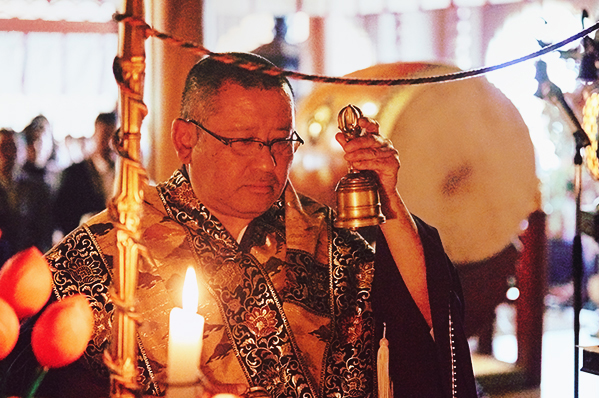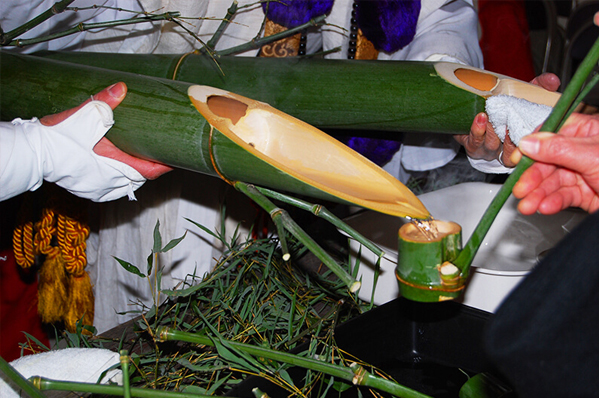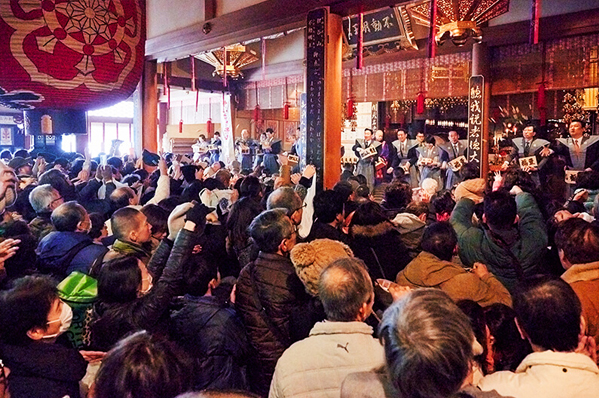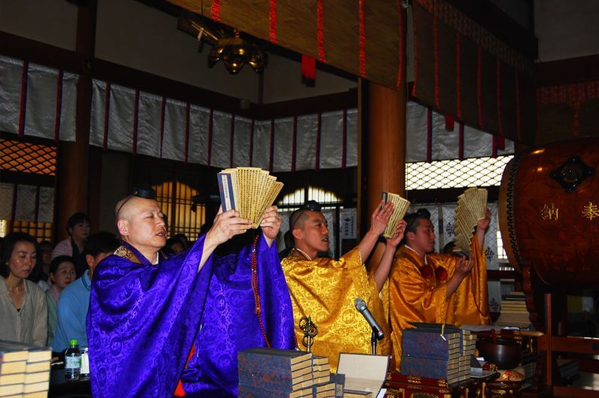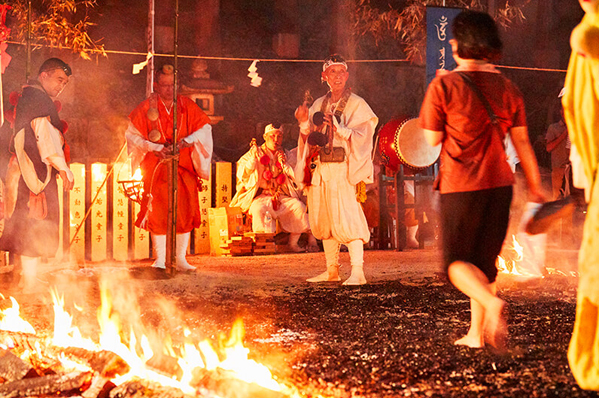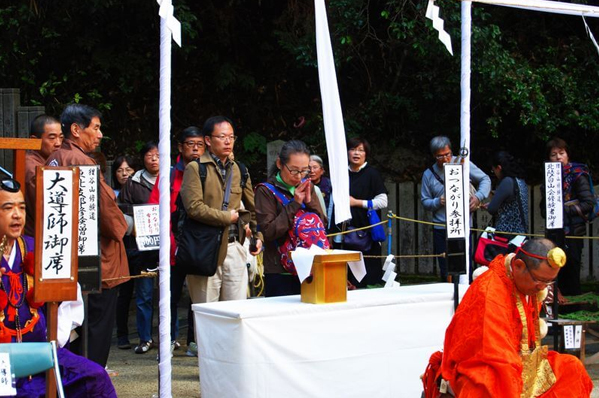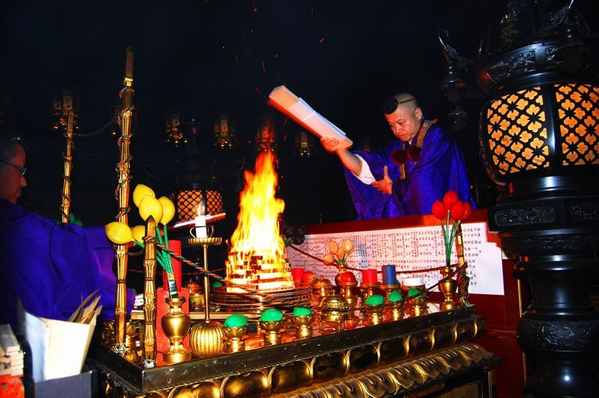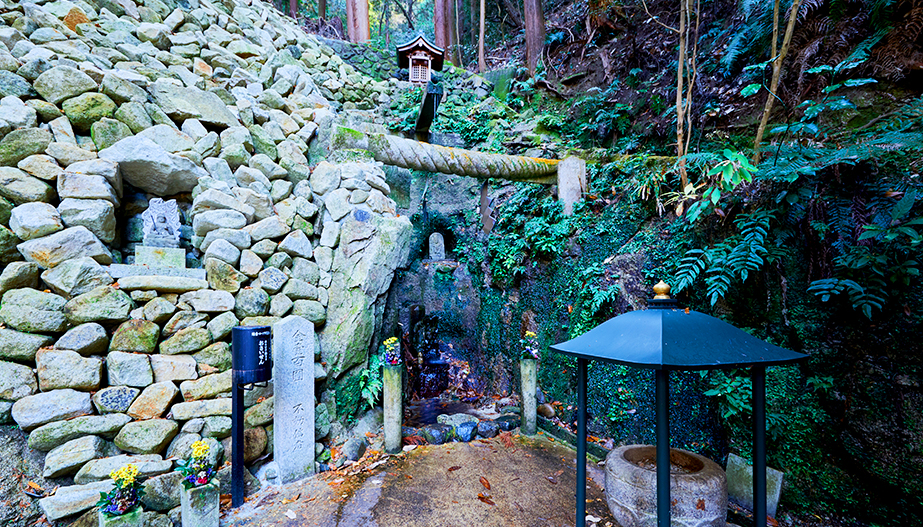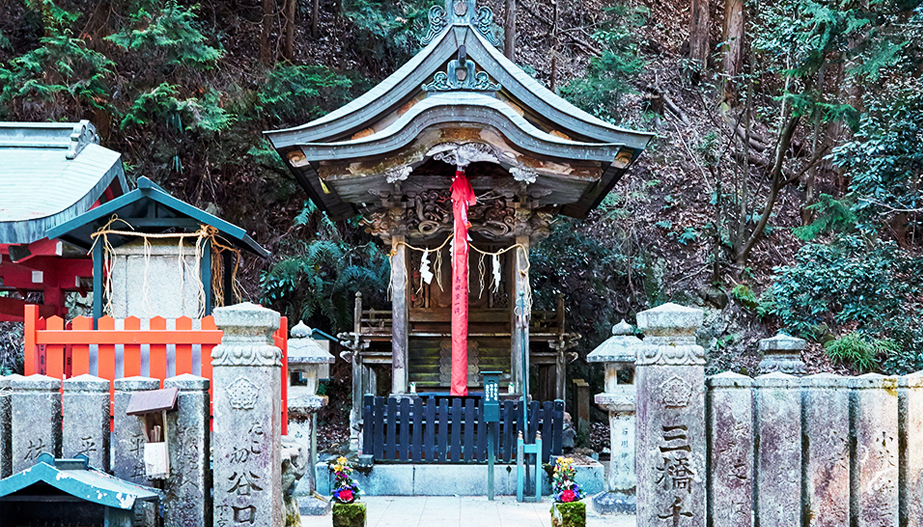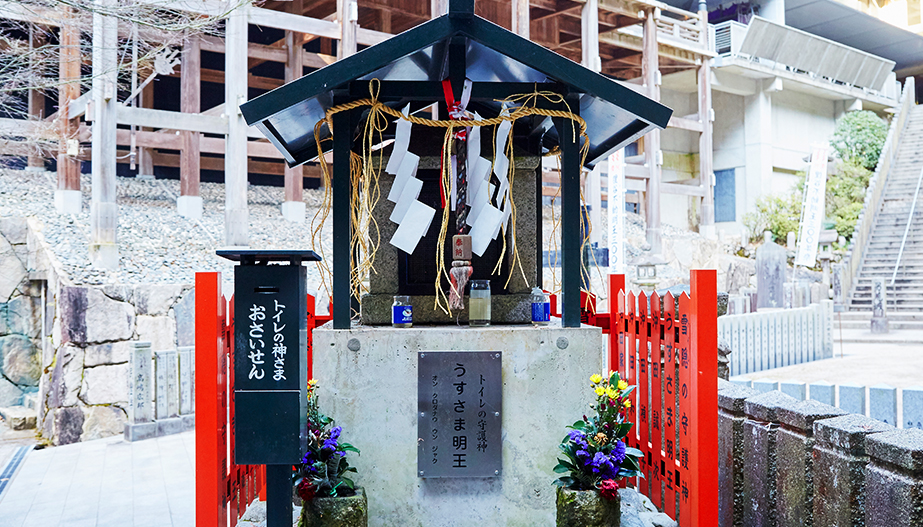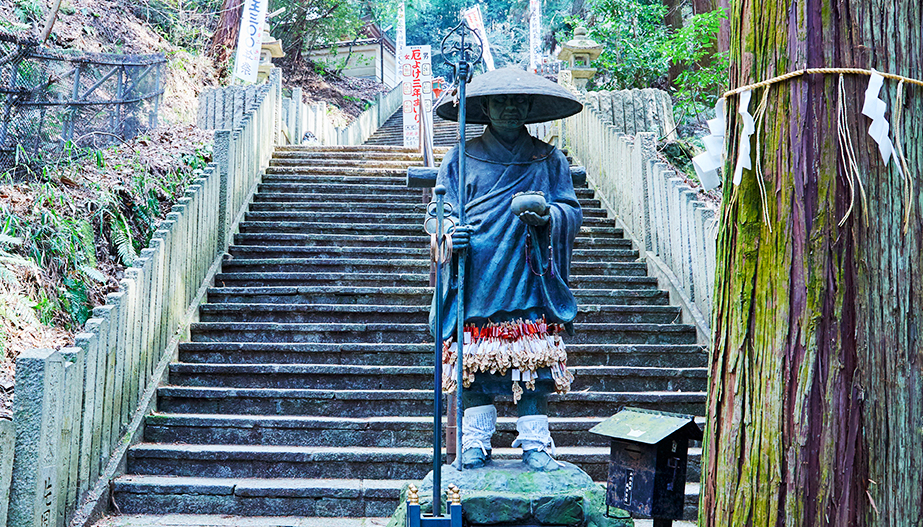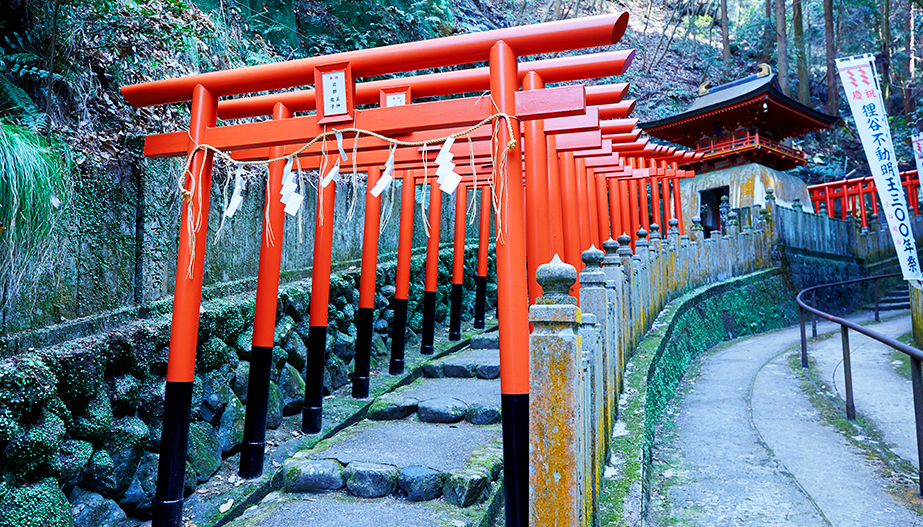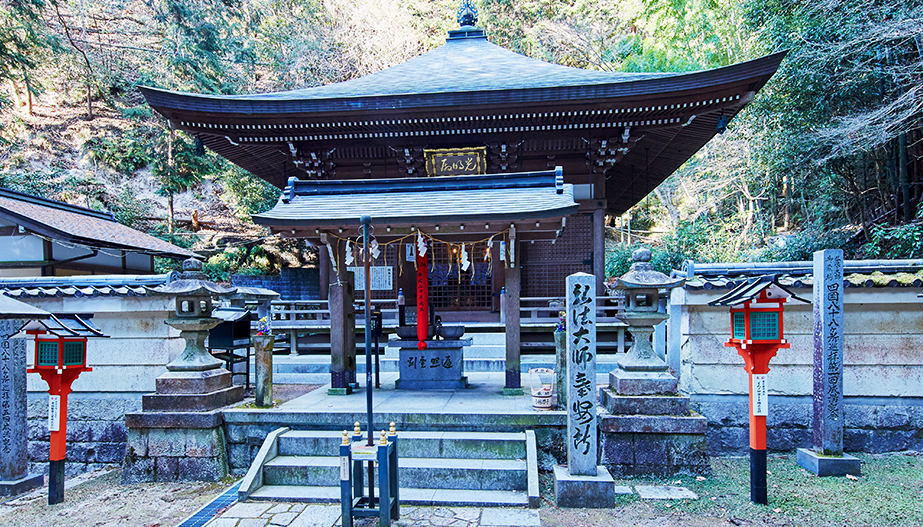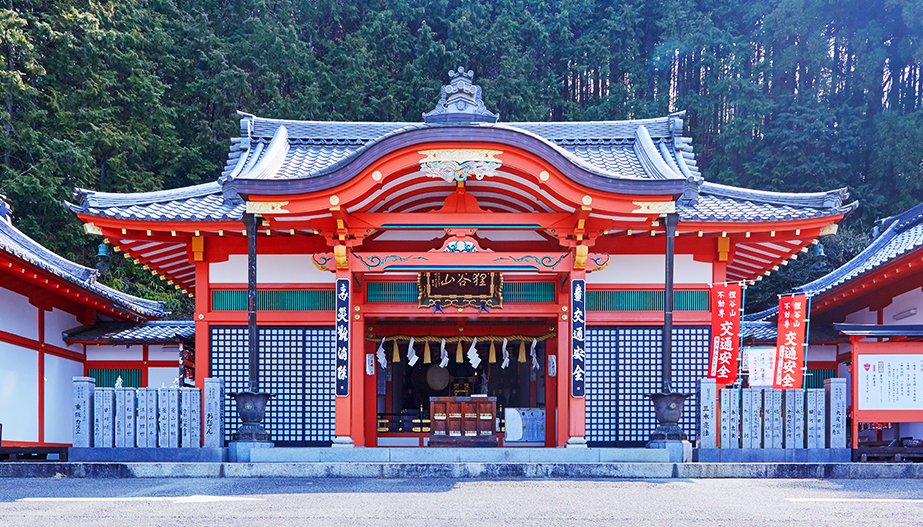ABOUT
In the year 1718, in a deep valley surrounded by three peaks and covered in dense forest, the monk Mokujiki Shōzen Tomoatsu discovered a square cavern some six meters deep. In order to pursue his ascetic mokujiki lifestyle (living off the natural products of trees and the land without processing), he resolved to settle in the cave. That valley’s name is Tanukidani, and the cave is now located within the temple’s main hall.
Soon after secluding himself, Mokujiki Shōzen Tomoatsu installed a statue of the Immovable Wisdom King Fudō Myō’ō in the cave to worship and observe the Buddhist teachings. The light of the prayers offered up to this miraculous Fudō Myō’ō has shone uninterrupted since that day, and in 2018 Tanukidanisan Fudō-in celebrated the 300th anniversary of its founding. However, until Chief Abbot Ryōei became the head priest in 1944 and oversaw the construction of temple halls, for 230 years Tanukidanisan Fudō-in was a natural site largely untouched by human hands. By virtue of the devotion offered up to the Fudō Myō’ō enshrined within the cavern, its faithful remain numerous to this day.



